
Saturday, June 16, 2018
What a long time in coming: sitting on a thin strip of land in the middle of the Pacific, building a new underwater camera, while just beyond the shelter of the covered terrace at le Relais de Josephine, rain poured and waves lapped on the shore within feet. When I first googled Rangiroa, my pin dropped in the middle of the blue Pacific. Only repeatedly expanding the map, pounding the “+” sign, eventually materialized an insubstantial ovoid strip of land, at the edge of which we now perched.
The “why now” part of this equation was a yearly mass aggregation of groupers expected the following week in Fakarava, another place I had to google and dramatically blow up before it appeared. Fakarava is roughly L-shaped. We were to spend most of our time in a clusters of dot-like islets which only appeared after multiple digital magnifications of google maps.
This, as trip organizer Tanya Burnett enticingly put it, would be “a wide angle view of sex on the reef”. The major players were Camouflage groupers, Epinephelus polyphekadion, converging in prodigious numbers towards the full moon on June 28, for a mass orgy of group spawning. We would be aboard a catamaran, the Aqua Tiki II, for 10 days. Steve, Greg and I added on a warm-up pre-trip stay of 3 days in Rangiroa to sample another atoll and to work out our photographic kinks before the main event. Rangiroa and Fakarava are two of many atolls in the Tuamotus, the largest chain of atolls in the world, atolls being strips of land encircling lagoons. Rangiroa is the largest atoll in the Tuamotus and the world’s second largest. These flattened islets and sand bars barely separate the ocean from the lagoon, making the meaning of Rangiroa in the local language, “vast sky”, très apropos, ce n’est pas? Fakarava is southwest of Rangiroa, the second largest Tuamotuan atoll and a UNESCO Biosphere Reserve.
Getting ready for any dive trip is an exhausting process of list and pile-making, ordering new pieces of gear, packing and more packing, hoping not to leave behind any of the tiny pieces of an underwater rig which might keep the whole system from working.
Added to the ordinary stress of dive travel, we had raised the tension level considerably by deciding it was time for us to finally upgrade our camera systems.
A timely convergence of a young photographer in need and a worthy conservation-minded organization had provided us with just the excuse we needed to donate our well-used Subal-housed Nikon D7000s and start the hunt for new systems. In October, 2017, we had been on SeaWatch founder Mike McGettigan’s boat in the Sea of Cortez. On board was Leo Gonzalez, a young Venezuelan underwater photographer living in La Paz who also was shooting with a Nikon D7000. His Ikelite housing was on its last legs. He was shooting both stills and video in support of Mike’s and Seawatch’s conservation efforts, including their most recent campaign, Espiritu Santo es Parte de Ti. When we mentioned to Mike we were thinking of upgrading, he suggested we donate our systems to SeaWatch, which would then make them available to Leo.
Steve had rented a Nikon D850 for our winter trip in Japan to try it out and now had one of his own, which he decided to house.
I had a much harder time deciding. I considered housing my land camera, the Fuji X-T2, but couldn’t find much collective experience on forums or phoning the major shops.
The leading contenders for a smaller mirrorless rig were the Olympus OMD and a camera I hadn’t even heard of, the Panasonic GH5. The level of enthusiasm for the Panasonic was astounding, with it considered one of the best for video, but also excellent for still.
After multiple phone consultations and YouTube viewings, I had just about decided on a set-up, the Panasonic GH5 in a Nauticam housing. I assumed I would acquire a dome port, maybe a mini-dome, and a flat port for macro, when I spoke to Got Muck’s Hergen, who now works for Nauticam, who suggested a completely different option for this combination: a WWL-1, or wet wild lens, an optically corrected wet wide angle lens used in combination with a pancake 14-28 mm zoom lens.
Now my head was spinning and the weeks toward departure were counting down. Tanya’s husband Kevin, who works for Reef Photo, would be traveling with us to French Polynesia and was very helpful. Reef had the enticing option of renting the system. I could try it out and apply the full cost of the rental to a new purchase. I saw no downside.
With time running out, I decided to go with Hergen’s suggestion, figuring this was the most different option from what I already knew.
Another stressor was leaving for LAX after work on Friday, always a traffic roulette of how much delay we would encounter. Steve and I worked together at Carmel Valley that day and encountered traffic impeding our trip home to change and meet up with George, our driver. We left a little after 7 pm and encountered no slow-downs until we neared LAX, where there was a 1 mile back-up at the exit to the airport. From there, we crawled, the final 3 miles taking most of an hour. Greg called while we were en route. He had dined with his nephew and his girlfriend, and was returning his rental car. We joked that he would beat us to the airport. We all finally made it, only to find the TSA pre-check line was closed, leaving us no option but to join the snaking long regular line through security. Our gate was far and we’d been warned when checking in to go directly, which was good advice, no time for lounging around this time.
We inquired about upgrading on checking in, but found the tariff too steep for 2 of us ($1340 each). Greg decided to go for it at the last minute. Despite being miserably uncomfortable (my seat did not recline), I was so tired from the work and preparation week I managed a few hours of sleep anyway, as did Steve.
Our transfer in Papeete went smoothly enough. We were hit up for overweight baggage charges, about $200 total for both of us for the whole trip, no surprise.
Sunday, June 16, 2018
(Tiputu Pass X 3)
Our first morning diving in French Polynesia: TopDive called the afternoon before, during a pouring loud rain, to ask about our level of experience. They particularly wanted to know if we had “Advanced” certification. Apparently, French law regulates how deep one can dive depending on certification level.
Our 2 morning dives were with Lea and our afternoon dive was with Laurent, both fairly recently transplanted French dive guides, most recently from the Maldives.
Dive #1 was the first dive for all 3 of us with new systems, Steve and Greg with Nikon D850s in Nauticam housings, me with the Panasonic GH5 in a Nauticam housing with the Nauticam WWl-1 water-optimized lens.
The first 2 dives were on the north corner opposite Chez Josephine, one starting further out, the other closer to the corner. The first was mostly a reef dive, good for dialing in exposures for me, with an eel being cleaned and 2 busily feeding turtles. I used Hergen’s technique on the verticals, turning off the bottom strobe and moving the top strobe to the 12 o’clock position.
Dive #2 was surgy over the point. I saw Greg wrestling underwater with his strobe (a new Retra) which proved to be flooded. The rest of the day was devoted to his chemistry experiments with gin, etc to clean out the corrosion and try to resuscitate it. I downloaded after the morning dives, during lunch break back at the hotel, and was very pleased with my initial results (using Alex Mustard’s 10 and 2 o’clock strobe positioning).
We were only booked for 2 morning dives/day but decided to do a 3rd afternoon dive when the opportunity was offered (about $100/dive).
Our 3rd dive with Laurent was a wild ride, nearly the length of the channel. We hoped for dolphin encounters, there being a friendly group resident in the channel, which we had seen periodically from le Relais de Josephine, our pension perched on the channel. As soon as we descended, we had a visitation from a single dolphin, which didn’t stick around long enough for me to get my settings dialed in. Steve nailed it though.
As we progressed on at 50 feet depth, we could see below us at 80 feet, another group having the dolphin encounter of dreams, with a group of 3 circling the divers closely, apparently enjoying belly rubs. They peeled off and I fervently hoped they would circle back to check us out, which sadly, they didn’t.
Heading into the channel, our speed accelerated, leading us to a canyon in which we clung to rocks on the bottom. Sharks rushed past, not close enough to shoot, even if we could bring camera to eye, which was well nigh impossible.
71 feet, 1 hour 2 minutes
81 feet, 54 minutes
Monday, June 17, 2018
I woke up when it was still dark. My camera, parked on the wooden deck, emitted a reassuring green glow of the vacuum system still going strong overnight. What was a surprise was a blinking green light emanating from the interior of the camera. I had no idea what this signified. I had an idea it might indicate the flash trigger might be low on battery, but elected to ignore it. It turned out later it meant it was still going strong.
Within minutes of entering the water, we headed into the blue. I saw Lea twisting in the water column, her eyes trained on something in the blue. This could only mean one thing-dolphins in the distance! I managed a few underexposed shots before I saw a horrifying underwater sight- a pattern of vertical colored lines, analogous to when analog TVs used to shut down for the night with a raster pattern. Suddenly, I couldn’t see through the camera, nor would it turn off and on.
I thought I might be able to sort out what was going on with the camera with a quick trip back to the hotel, but Lea said there wasn’t enough time-we would leave as soon as the tanks were refilled, in 15 minutes.
That’s how I dove without a camera for the first time in ages. At lunch, I changed the battery, as well as the batteries for the flash trigger. Greg taught me how to test the freshness of a battery by licking it, a metallic sizzle on the tongue.
We were paired up on our third dive with Julien, who appeared to be a relatively new diver, judging by his upright, unicycle posture in the water column. We had another brief dolphin encounter at depth, which Steve largely missed, having his head buried in the reef. We had a long traverse across a section we dubbed “The Wasteland” of grey and broken coral rubble, before finally reaching a stretch of shallow hard coral, over which waves broke.
Lea tugged on my fin, and then Greg’s, to signal it was time to ascend. Steve was visible a short distance away, practically in the surf zone. She took us to task afterwards, admonishing me to “look at her, sometimes”. Apparently my response time was inadequate. We were frustrated, having spent so much of our dive traversing “The Wasteland”, only to arrive at this picturesque hard coral garden with possibilities, and then had to ascend with (in my case) almost 950 PSI still in my tank. It turned out Julien was low on air, which presumably exacerbated Lea’s anxiety.
72 feet, 56 minutes
71 feet, 59 minutes
Tuesday, June 18, 2017
We had come expecting to do 2 dives a day, with the option for a 3rd, afternoon dive offered after we arrived. The offer for today was retracted the day before-apparently, all boats were heading with beginners to the lagoon, and there wouldn’t be much to interest us.
Our 2 morning dives were spent with Laurent as dive guide and the Japanese couple (an instructor and his cone-head capped wife) from the Kia Ora. Steve discovered once we were at TopDive that he had forgotten his computer, which was charging back at le Relais de Josephine. They ran him back in the truck while we boarded and headed to the Kia Ora to pick up the other divers. In general, the boats were filled with 2-3 groups, which would be dropped off with their dive guides in different parts of the channel. At the end of the dive, the guide would inflate a long safety sausage on a reel to notify the boat driver of our location.
95 feet, 57 minutes
107 feet, 53 minutes
We ended up doing some loooong swims on our two dives. The first was a very long drift dive along the length of the channel, all the way down to “The Aquarium”, the small islet on the lagoon side of the cut. This required precision maneuvering to be sure of ending up at the right spot. It was quite a Disney ride, impossible to shoot along the way, and while “The Aquarium” was filled with fish, the water was silty and milky, a normal result of being an eddy.

Despite the silty conditions, Steve managed this shot of humpback snappers (Lutjanus gibbus) at The Aquarium in Rangiroa.
On the second dive, we ended up exercising more than anticipated. We dropped into the corner to check out what might be swimming by in the blue. There wasn’t much. Laurent dropped down what seemed unnecessarily deep. We followed along 20 or so feet above him. His reason for being as deep as he was became evident later. What I noticed was that most of the group had converged on the slope of the reef. Despite kicking determinedly, I didn’t seem to be making any significant headway. Way below, we could see sharks and spotted eagle rays, but the landmark stones below seemed not to be budging. The water was so clear that even though he was a long way off, Laurent was able to signal that I should swim down, closer to the ocean floor. Sure enough, it was much easier, somehow shielded from the current we were fighting. This was a good lesson learned-although it seems safer to swim at a shallower depth, that may not always apply if the current makes you swim twice as hard.
Greg and I visited Gauguin’s pearl farm in the afternoon. Pearl cultivation is a labor-intensive process. It takes 5 years before an oyster produces the first of up to 3, rarely 4, pearls. Baby oysters must first be cultivated to reach a 3 year size, before a bead and a graft are introduced. This was Mikimoto’s discovery, leading to the modern pearl industry. The graft is a tiny cut up piece of the lips of an oyster, stained red to aid the technician in seeing and placing it. The beads are made from polished pieces of freshwater river oyster from Mississippi. It takes 2 years of training to become a technician, who can inseminate 350 or so oysters per day. This farm has 2 technicians, whose products are differentiated by attaching their oysters to different colored ropes. The oyster’s health is monitored every 3 months, when their shells are cleaned. The color of a pearl derives from the color of the lips of the source oyster, with Tahitian or black pearls cultivated in black-lipped oysters.
The man presenting these facts to us was odd-he was neatly dressed in a shirt decorated with sea creatures, but had half of his teeth missing and the remainder were heavy with tartar. Greg and I waited with him for another couple in the boutique to emerge for the presentation. Trying to dispel an uncomfortable silence, I tried chatting him up, asking in French, are you from here, clearly (in my mind) implying from French Polynesia.
“Est-ce que vous êtes d’ici?”
He pretended not to understand my pronunciation of “d’ici”, making me repeat it several times before deigning to answer that he was from another island but came to Rangiroa for work. He himself gave his presentation in heavily accented but clearly understandable English. He seemed to address many remarks to someone suspended in the corner of the covered space, which had many benches, sufficient to seat a busload of people, although all 4 of us were 2 feet in front of him in the front rows.
Wednesday, June 19, 2018
Excursion to Blue Lagoon and on to Fakarava
Hearing we could see an abundance of baby black-tip reef sharks at the Blue Lagoon and not leaving until afternoon opened up the possibility of a snorkel excursion there. To make it back in time to the airport, we had to book a private trip, since the Blue Lagoon normally is an all day excursion. Steve elected to stay back at the pension, writing, and would meet Greg and me at the airport.
It is a 1 hour trip out, by way of Bird Island, wreathed in frigates, which alighted in unison as our driver pounded the deck.
Our first stop was outside the blue lagoon, where black-tip reef sharks patrolled, as well as a few lemon sharks down below, sleeping. Although the sharks were numerous, it was difficult shooting, so bright I could hardly see anything in viewfinder.
From there, we proceeded to the lagoon. The water level was only a few inches, so our driver walked, pushing the boat after Greg and I alighted. In the sand, in water 6 inches in depth, baby black-tipped reef sharks swam to and fro. They were numerous but even harder to approach.
Our driver dropped us off for a swim while he headed to the beach to prepare our lunch. There were a few hard coral bommies. More tiny baby sharks swam determinedly around in a few inches of water, so shallow I could not even submerge my dome below the water’s surface. Greg attempted to corral a shark toward me with his feet, another failed experiment. He brought the Mavic with him, but it was too windy to fly it close enough to the water’s surface to shoot the tiny sharks from the air.
Heading back, the skiff’s motor made encouraging rumbles but refused to actually turn over, so our driver ended up towing us out of the lagoon, while swimming.
While we were still in the skiff, we tried another tact, lying prone in the back of the skiff, hanging off the back , with the cameras dangling in the water, while our driver threw leftover bits of lunch overboard. This brought the sharks and fish in a rush.
The ride back was a white foam-churning, droning chariot, which landed us at the dock directly across the street from the airport. We were a half an hour early for our 2 pm rendezvous, so were headed back to the pension to meet Steve when we saw the le Relais de Josephine van pulling into the airport with Steve and 2 French couples also headed to Fakarava. The man who had picked us up in his truck, presumably the boat owner, suggested we could shower at his house nearby.
He had a wooden deck with hoses at either end, enabling us to rinse off and to give the cameras a brief rinse as well. I had to change out of my wet bathing suit bottom under a towel, but elected to just wear my tankini bathing suit top as a top.
Back at the airport, it was a mad rush to break the cameras down into suitcases and get checked in, but we got it done. A 40 minute flight later, we were at the tiny Fakarava airport, being met by the boat’s hostess, Sidonie. We were quickly loaded into the truck and on to the main event, the Aqua Tiki II, hoping the grouper spawning and walls of sharks would be all we dreamed.
Tanya and Kevin and Douglas and Emily were already aboard. Douglas had bungled up his knee before we boarded, so greeted us from a reclining maharaja position.
Shortly thereafter, in the rush to build the camera, disperse dive gear into mesh sacs and hanging wetsuits, I banged my little toe while dashing around the boat, which slowed me down a little, at least for a few days.
Ça suffit! Enough for one post…to be continued…in Fakarava!

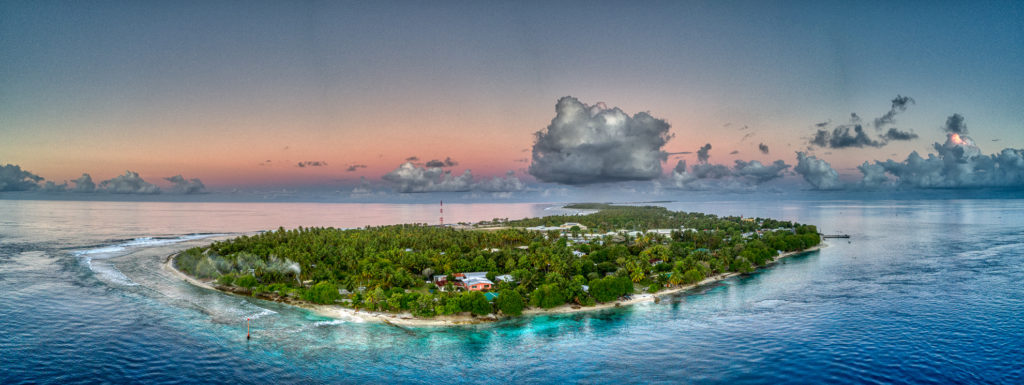
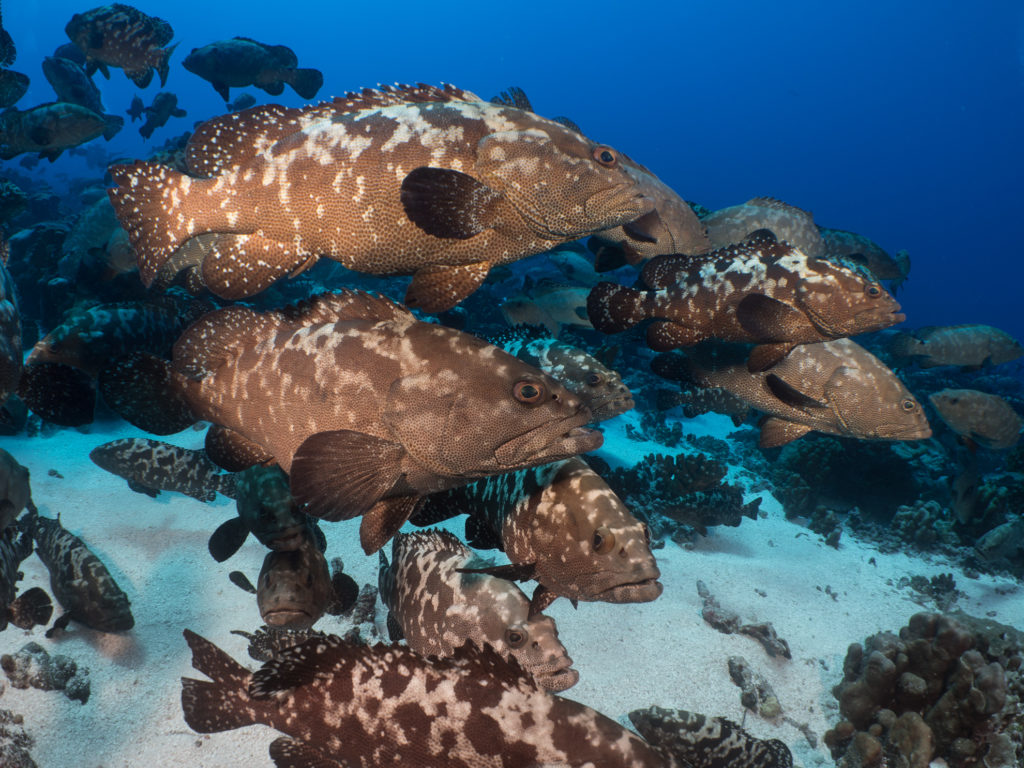


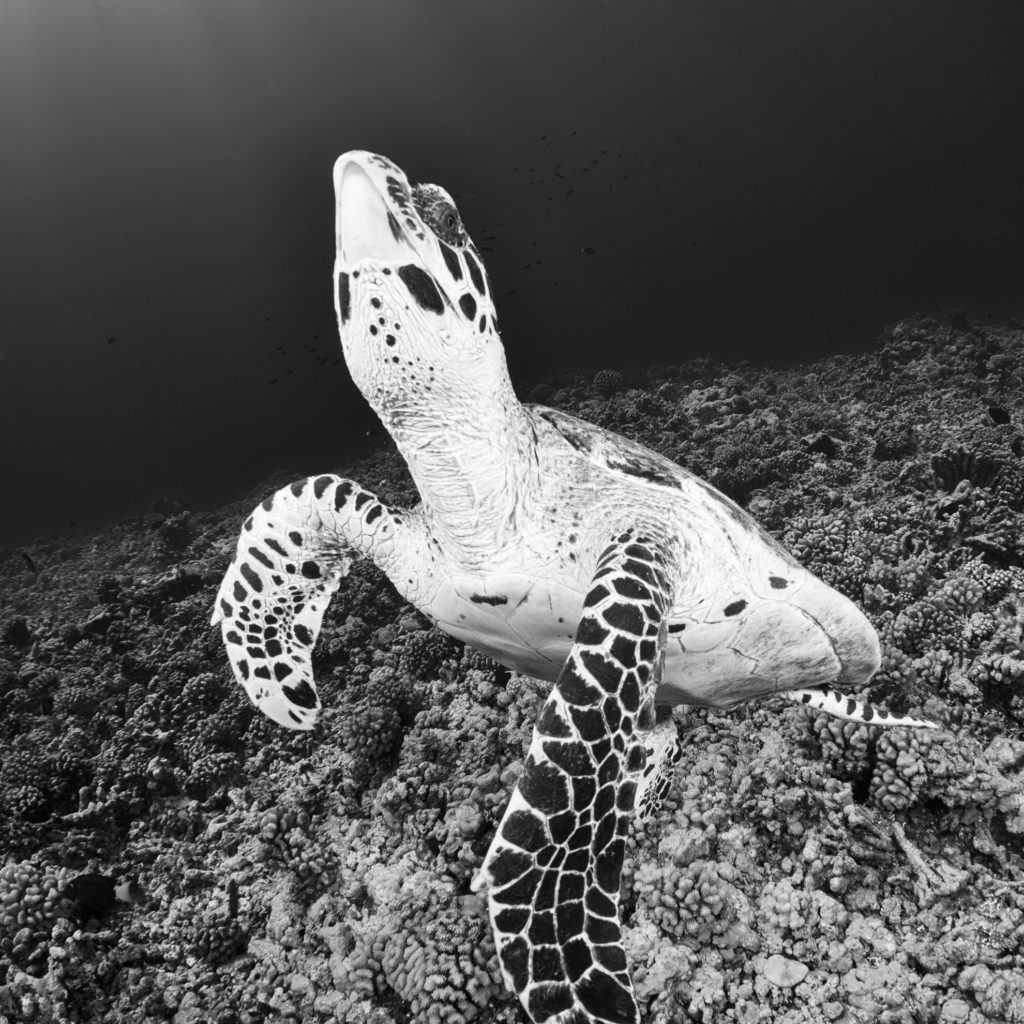



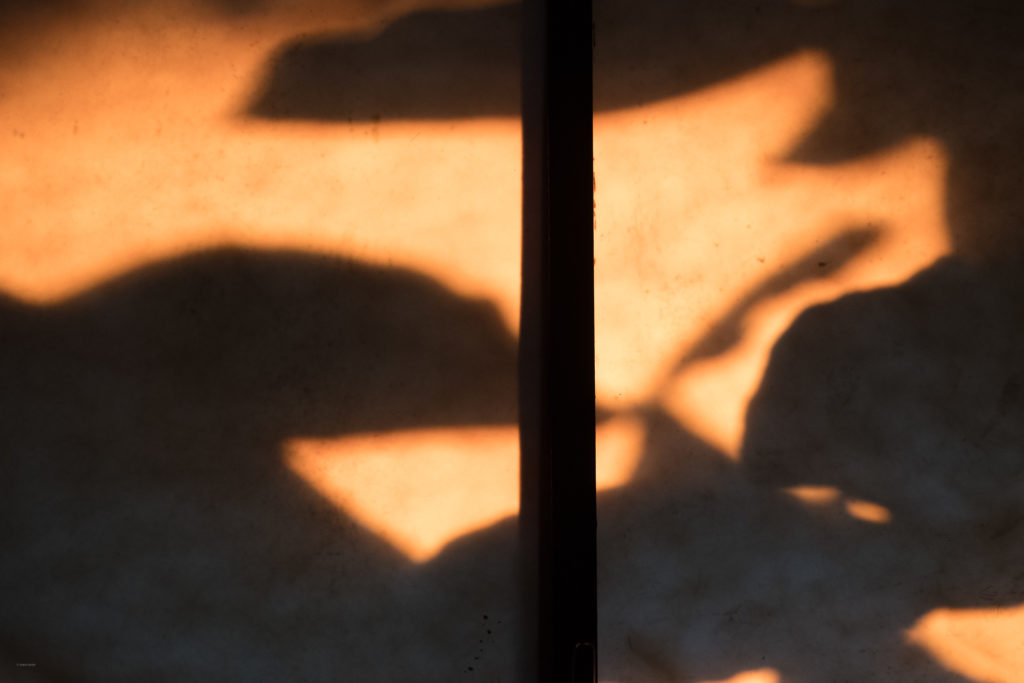
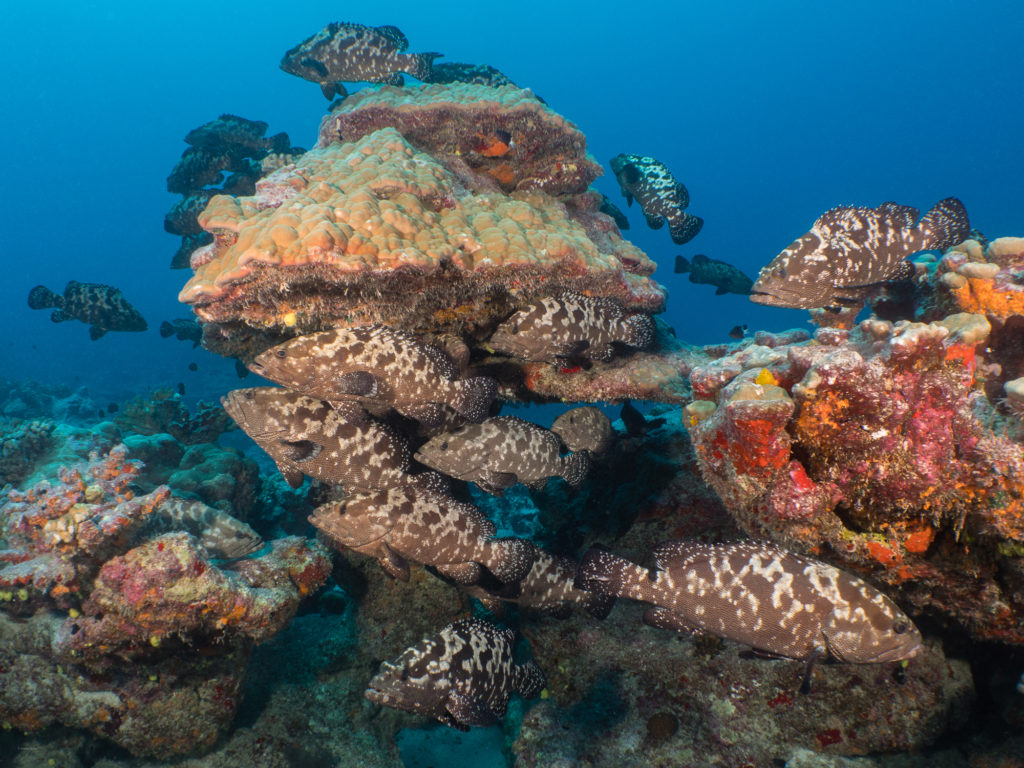
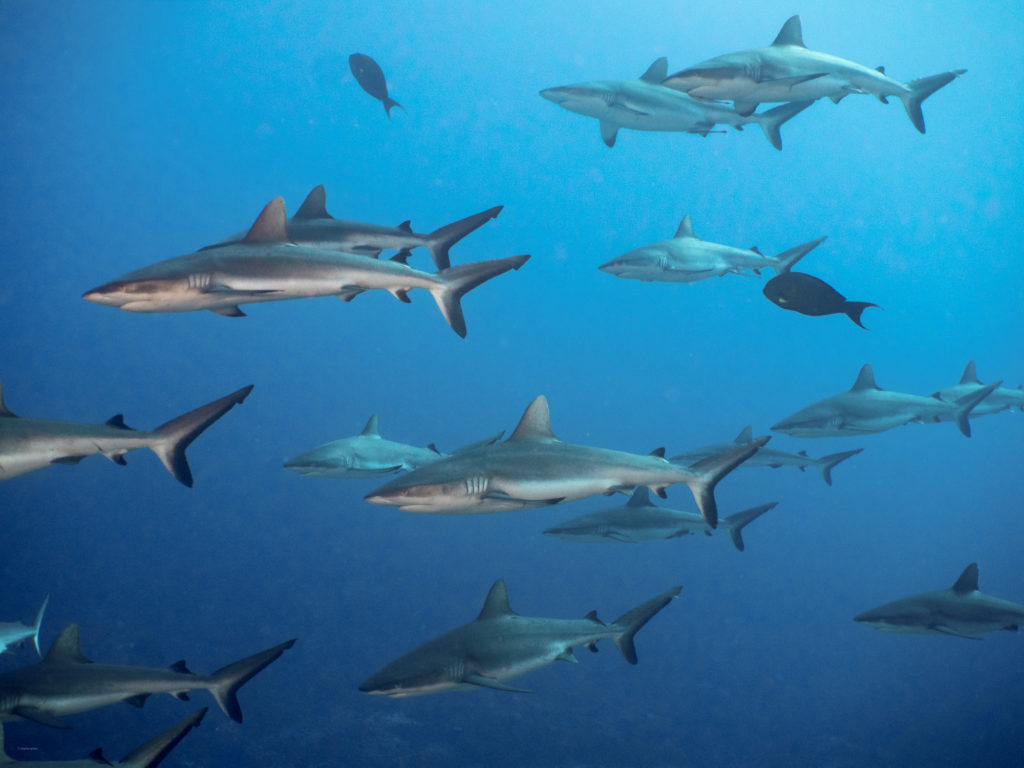
An awesome adventure 🙂